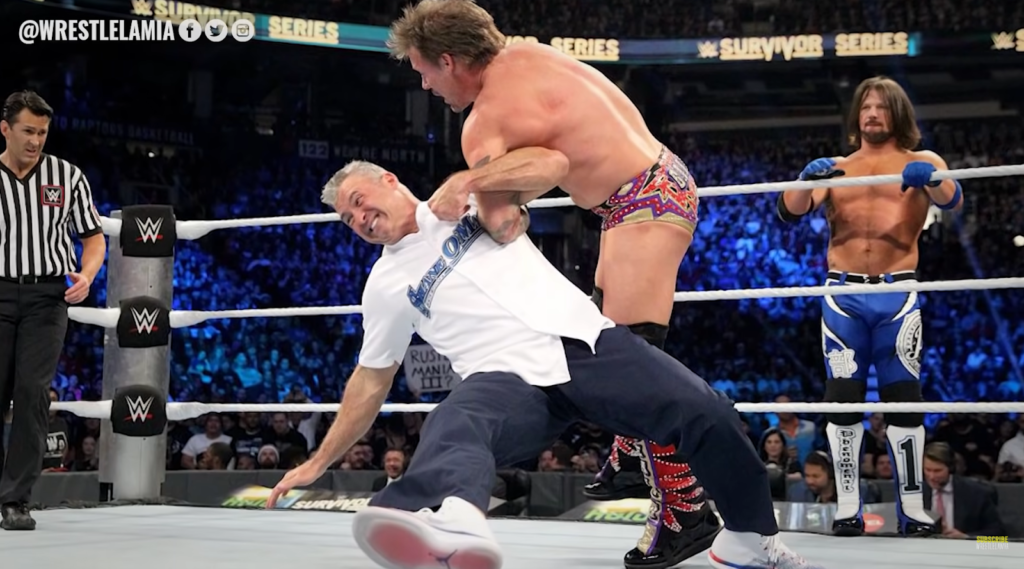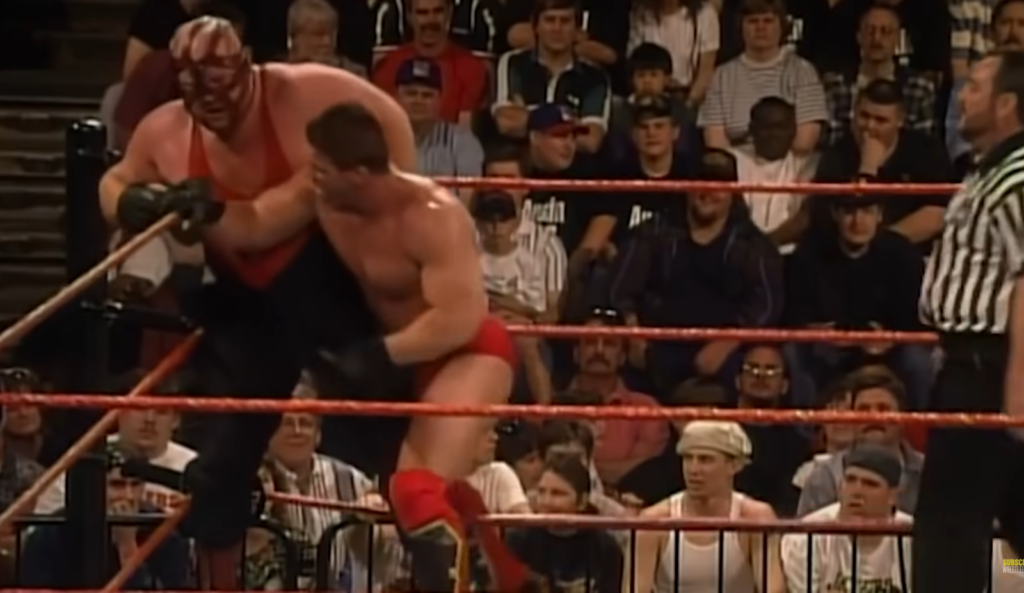Based on viewership statistics, professional wrestling holds a global appeal, engaging a substantial audience. Notably, a recent installment of WWE Monday Night Raw amassed a viewership exceeding 1.9 million. Given this considerable attention directed towards wrestling, a pervasive curiosity arises regarding its authenticity.
The Truth About Wrestling
Wrestling’s authenticity is an intriguing blend of athleticism and storytelling, where the lines between reality and theatricality are artfully blurred. While the outcomes of matches are indeed predetermined, the physical prowess demonstrated in the ring is undeniably real. The world of professional wrestling is a symphony of choreographed drama, where scripted narratives intertwine with raw athleticism to create a captivating spectacle.
From executing high-flying maneuvers to enduring bone-jarring slams through tables, the physical demands placed on wrestlers are unquestionably genuine. These feats, mastered through years of training and dedication, highlight the exceptional athleticism that underpins the spectacle. Yet, beneath the surface, the intricate choreography that characterizes wrestling’s performances is orchestrated with meticulous precision.
Wrestlers step into the ring with an understanding of how the contest will conclude, participating in a ballet of scripted moves that tell a compelling story. The narrative arc, punctuated by dramatic highs and lows, unfolds as wrestlers engage in a dance of scripted conflict. While the final destination is predetermined, the journey to that point is a testament to the skill and coordination of these performers.
For those newly entering the world of WWE and professional wrestling, this article serves as a gateway to understanding the multifaceted nature of the sport. We’ll peel back the layers to explore not only the scripted choreography that underlies each match but also the psychology that guides the performances. Wrestlers are both athletes and storytellers, leveraging their physical prowess to convey emotion and drama to the audience.
Delving into wrestling’s scripted nature reveals the dedicated craftsmanship that goes into each performance. It’s an intricate dance where wrestlers collaborate to create moments that resonate with fans, transcending the confines of the ring. So, whether you’re a casual viewer or a seasoned fan, journey with us as we unveil the truth about wrestling—an art form that fuses athleticism and narrative to craft a truly unique form of entertainment.
The Scripted Reality: Why Wrestling Isn’t Authentic
The perception of wrestling’s authenticity is rooted in its predetermined nature, absence of genuine competition, and inclusion of scripted segments. These elements collectively contribute to wrestling’s classification as an orchestrated performance. Within the realm of professional wrestling, a certain level of prearrangement has always existed. This once-hidden reality eventually emerged into the open, shattering illusions that had been maintained for years.
- Vince McMahon, WWE’s chairman, notably admitted the staged nature of wrestling in the 1980s. This disclosure jolted fans who had been led to believe in its reality by McMahon himself;
- McMahon’s revelation was strategic, designed to exempt WWE from conventional sports regulations. Though this revelation rattled countless fans, it was a calculated step by the chairman;
- Ever since that pivotal moment, wrestling enthusiasts worldwide have recognized that match outcomes are predetermined, dispelling the illusion of spontaneity. It’s common knowledge that winners are selected in advance, eroding the genuine competitive aspect;
- Furthermore, the lack of genuine competition is bolstered by the awareness that wrestlers aren’t actually striving to triumph. Their foreknowledge of the outcome negates the necessity for authentic combat. Instead, wrestlers put on an elaborate display for the audience, mimicking a real clash;
- Coupled with predetermined outcomes, wrestling incorporates choreographed sequences or “spots,” as industry insiders term them. These are meticulously choreographed segments planned ahead of time.
Although these segments showcase remarkable athletic prowess executed in a single take, their scripted nature reinforces the realization that wrestling’s authenticity is limited.
The Evolution of Wrestling: From Reality to Entertainment

The transformation of wrestling into a staged spectacle occurred around the 1920s, coinciding with the rise of traveling wrestling exhibitions. These events prioritized entertainment over authentic combat, marking the inception of what we now recognize as professional wrestling.
These traveling shows marked the initial departure from wrestling’s strict fighting-oriented roots. They introduced a blend of drama and flair, fundamentally reshaping the sport into an entirely new experience. It was during this period that the term “fake” became interwoven with wrestling’s identity.
Subsequently, wrestling diverged from its sports counterparts due to its scripted conclusions and infusion of artistic expression.
Despite its acknowledged scripted nature, wrestling’s popularity continued to surge, propelled by the legacy of those early traveling showcases. Today, professional wrestling is ubiquitous, with televised shows airing five nights a week, while platforms like YouTube and apps provide even more access to the spectacle.
Unmasking WWE Hits: Real vs. Staged Impact
The majority of the hits witnessed in WWE are not genuinely impactful, although certain elements remain beyond simulation. Wrestlers do make contact with each other, but their strikes are executed with controlled force. Their training involves delivering hits that appear authentic without causing actual harm to their opponents.
At its core, WWE is an entertainment-driven enterprise, heavily invested in its talent. The objective is to avoid causing harm to opponents, focusing on their safeguarding instead.
Wrestlers achieve this by deliberately withholding their full strength during strikes. This approach maintains the illusion of realism while minimizing injury risk for opponents.
However, it’s important to note that errors in timing and judgment can occasionally lead to genuine hits. In these instances, authentic impacts can occur, albeit unintentionally.
Furthermore, the history of WWE features instances where hits resulted in concussions and even career-ending consequences. For instance, Bret Hart’s career concluded following a forceful strike from Goldberg that caused a concussion. Thus, authentic impacts do arise but are typically accidental.
Certain hits remain inherently difficult to feign within professional wrestling. For instance, when a wrestler strikes another with a chair to the back, the sensation is far from pleasant. Whenever foreign objects are introduced to a match, the impact is indeed felt and experienced.

Tragedy and Remembrance: Reflecting on Deaths in WWE
Deaths have occurred within WWE, with some strikingly young lives lost. Among them, Owen Hart’s passing remains distinctive as the only in-ring fatality. During a planned stunt, tragedy struck when the line meant to lower him to the ring snapped, causing him to fall over 70 feet.
This harrowing incident was witnessed live by many in the stadium but was never televised. Following this heartbreaking event, extensive safety measures were implemented. However, the memory of Owen Hart’s loss remains etched in the minds of wrestling fans even after 22 years.
While there have been other deaths attributed to injuries, alcohol, and substance abuse, WWE has not witnessed another tragedy akin to that of Owen Hart. No wrestlers have met their demise in the ring before or after Owen, though the untimely deaths of legends like Eddie Guerrero and Curt Hennig resonate profoundly.
Conclusion
Despite its scripted nature, wrestling endures as a popular pastime, captivating viewers each week. Although not all blows connect, executing realistic-looking simulated hits in a single take necessitates a degree of athleticism and finesse.
Over time, wrestling has evolved from a perceived sport to a form of entertainment. Yet, one undeniable truth persists: even in its scripted form, wrestling has retained a compelling grip on our attention.